
In the pursuit of quality education, the role and significance of school facilities cannot be undermined. These essential components provide students with a conducive environment that facilitates learning and enhances their overall educational experience.
For instance, the school library serves as a hub for knowledge and exploration, while laboratories allow for hands-on learning experiences. Additionally, the gymnasium promotes physical health and teamwork, and the café nurtures social connections. Furthermore, classroom technology revolutionizes learning in the digital age.
This article aims to analyze these various facilities' importance in enhancing student learning outcomes and fostering an engaging educational environment.
Key Takeaways
- School facilities such as the school library, laboratories, gymnasium, and café play a crucial role in enhancing learning experiences.
- The school library fosters collaborative learning, research skills, and a sense of community among students.
- Laboratories provide hands-on experimentation, promote critical thinking, and bridge the gap between theory and practice.
- The gymnasium promotes physical fitness, teamwork, and overall well-being, while the café offers a space for social interactions and supports physical and mental health. Classroom tech, such as gamification and virtual reality, enhances learning experiences by making lessons enjoyable and immersive.
The School Library: A Hub for Knowledge and Exploration
The school library serves as a central resource for students to access knowledge and engage in exploratory learning activities. It is a space that fosters collaborative learning and cultivates research skills among students.
The library provides a wide range of materials, such as books, journals, and online databases, which enable students to conduct thorough research on various topics. Additionally, the library offers a quiet environment conducive to concentrated study and reflection.
Students can work individually or in groups, sharing ideas and collaborating on projects. This promotes a sense of community and encourages peer-to-peer learning. Furthermore, the librarian plays a crucial role in guiding students towards relevant resources and teaching them effective research techniques.
As we transition into the subsequent section about laboratories: unleashing the power of hands-on learning, it becomes evident that both the library and laboratories are essential components in providing comprehensive educational experiences to students.
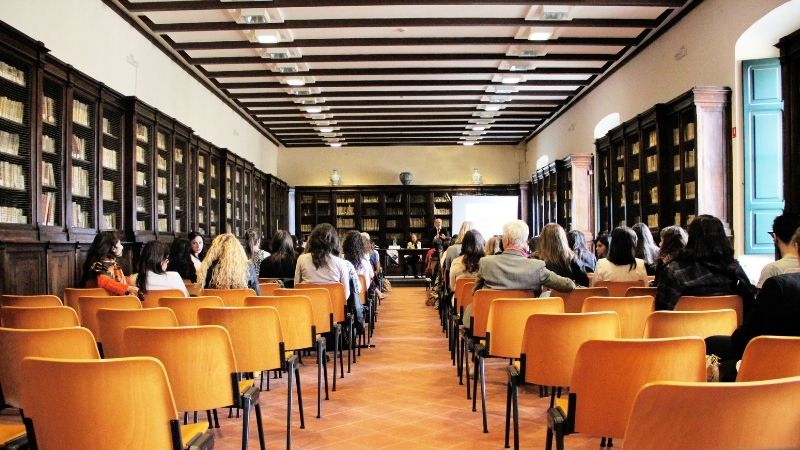
Laboratories: Unleashing the Power of Hands-on Learning
Laboratories serve as catalysts for experiential education, allowing students to engage in hands-on learning and apply theoretical knowledge to practical situations. They are essential components of a well-rounded educational environment, providing opportunities for scientific inquiry and exploration.
Here are five key reasons why laboratories play a crucial role in student learning:
Hands-on experiments: Laboratories provide students with the chance to actively participate in experiments, fostering a deeper understanding of scientific concepts.
Scientific inquiry: Laboratories promote critical thinking and problem-solving skills by encouraging students to ask questions, develop hypotheses, and design their own experiments.
Real-world application: Through laboratory work, students can bridge the gap between theory and practice, gaining valuable insights into how scientific principles operate in real-life scenarios.
Collaboration: Working in laboratories encourages teamwork and collaboration among students as they share ideas, discuss results, and analyze data together.
Skill development: Laboratories help develop essential skills such as observation, measurement, data analysis, and communication.

By engaging in hands-on experiments and scientific inquiry within laboratories, students not only gain practical knowledge but also cultivate important skills that prepare them for future academic pursuits or professional careers.
Transitioning from the power of laboratories to another important school facility is the gymnasium - a space dedicated to fostering physical health and teamwork.
The Gymnasium: Fostering Physical Health and Teamwork
Fostering physical health and teamwork, the gymnasium serves as a dedicated space within the educational environment. It plays a crucial role in promoting physical fitness among students, providing them with opportunities to engage in various activities that enhance their overall well-being. Through participation in sports and exercise programs, students can develop their motor skills, improve cardiovascular health, and maintain an active lifestyle.
Additionally, the gymnasium promotes teamwork by encouraging collaboration and cooperation among students during team sports and group exercises. By working together towards common goals, students learn valuable interpersonal skills such as communication, leadership, and problem-solving. These skills are essential for success not only in sports but also in other areas of life.
Transitioning into the next section about 'the café: fueling minds and nurturing social connections,' another important aspect of school facilities comes into focus.
The Café: Fueling Minds and Nurturing Social Connections
Serving as a social hub within the educational environment, the café plays a vital role in providing nourishment and fostering connections among students. As an essential school facility, the café benefits students in various ways:
Promotes social interactions: The café provides a space where students can gather and engage in conversations, enhancing their interpersonal skills.
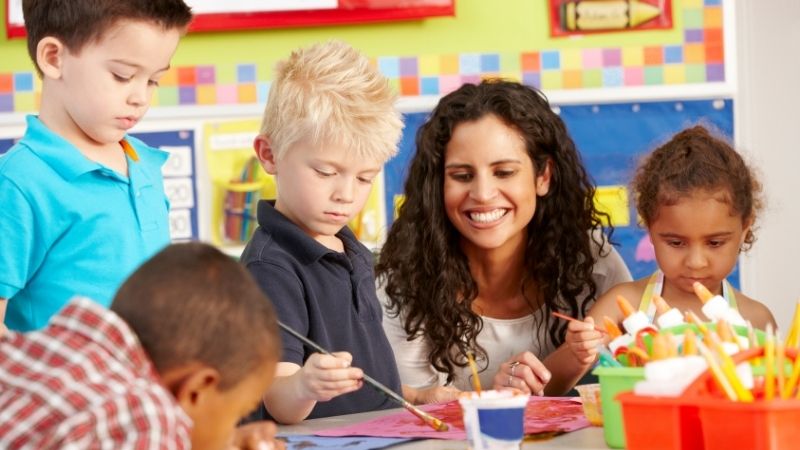
Encourages collaboration: Students often use the café as a meeting place for group projects or study sessions, fostering teamwork and collective problem-solving.
Enhances well-being: The provision of nutritious food and beverages in the café ensures that students have access to balanced meals, supporting their physical and mental health.
Facilitates cultural exchange: Through diverse food options, the café exposes students to different culinary traditions, promoting cross-cultural understanding.
Supports academic performance: By offering a quiet and comfortable environment for studying, the café aids in concentration and productivity.
Overall, the café not only fuels minds but also nurtures social connections among students.
Classroom Tech: Revolutionizing Learning in the Digital Age
The integration of technology in classrooms has revolutionized learning in the digital age.
One key aspect is the use of tech for active engagement, which involves interactive platforms and tools that encourage student participation and involvement during lessons.
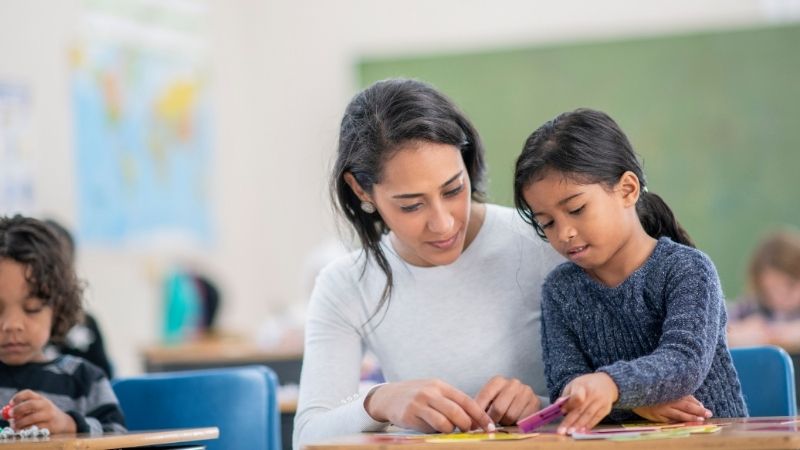
Additionally, technology enhances collaboration by enabling students to work together on projects and communicate effectively, fostering teamwork and peer-to-peer learning.
Furthermore, technology supports creativity by providing various digital resources and multimedia tools that allow students to express their ideas in innovative ways.
Tech for Active Engagement
Technology plays a crucial role in promoting active engagement among students in the classroom. It provides various tools and resources that facilitate interactive learning experiences, encouraging students to participate actively in their education.
Here are some ways technology can promote active engagement:
Gamification: Technology allows educators to incorporate game elements into lessons, making learning more enjoyable and motivating for students.
Virtual Reality (VR): VR technology enables immersive experiences that transport students to different places and time periods, enhancing their understanding of various subjects.
Online collaboration platforms: These platforms enable students to collaborate with peers on projects and assignments, fostering teamwork and communication skills.

Interactive whiteboards: These digital boards allow teachers and students to interact with lesson content, making it more dynamic and engaging.
Mobile apps: Educational apps provide personalized learning experiences, allowing students to engage with content at their own pace.
Enhancing Collaboration and Creativity
Collaboration and creativity can be enhanced in the classroom through the incorporation of various technologies. These technologies include gamification, virtual reality, online collaboration platforms, interactive whiteboards, and mobile apps.
Gamification allows students to participate in interactive activities that foster teamwork and competition. This can be particularly effective in engaging students and encouraging collaboration.
Virtual reality enables students to explore new environments and work together on immersive experiences. This technology can provide unique opportunities for students to engage in collaborative projects and develop their creativity.
Online collaboration platforms facilitate communication and cooperation among students working on group projects. These platforms allow students to easily share ideas, collaborate on documents, and work together on assignments.
Interactive whiteboards encourage active participation and brainstorming sessions. They provide a visual and interactive platform for students to share their ideas and collaborate with their peers.
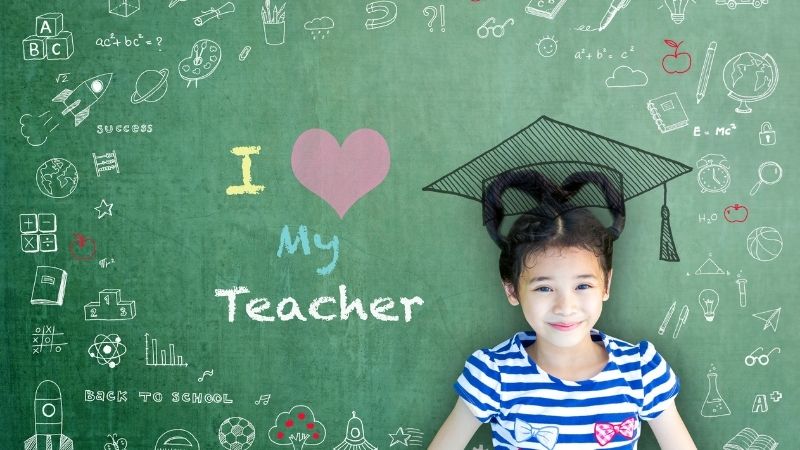
Mobile apps offer access to resources and tools that support collaborative learning. These apps can provide students with the ability to work together on projects, access information, and share their work with their peers and teachers.
Creating Collaborative Spaces: Breaking Down Classroom Walls
This discussion will focus on the benefits of flexible seating, encouraging group work, and incorporating technology effectively in the classroom.
Flexible seating allows for a more comfortable and adaptable learning environment, promoting student engagement and collaboration.
Encouraging group work fosters teamwork skills, problem-solving abilities, and peer-to-peer learning opportunities.
Incorporating technology effectively enhances instructional delivery, provides access to a vast range of resources, and prepares students for the digital age.
Benefits of Flexible Seating
Flexible seating arrangements in schools have been found to facilitate increased student engagement and promote a more comfortable learning environment. This alternative seating option has gained popularity due to its various benefits.
Increased movement: Flexible seating allows students to move around freely, which can help them stay focused and prevent restlessness.
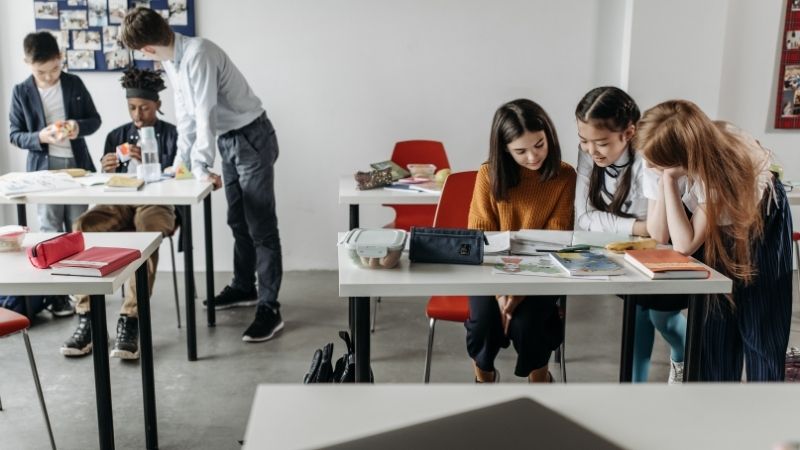
Enhanced collaboration: Students can easily work together in different seating configurations, promoting teamwork and communication skills.
Personalized comfort: With options like bean bags, cushions, or standing desks, students can choose what works best for their individual needs and preferences.
Improved concentration: By allowing students to select their preferred seating arrangement, they are more likely to feel comfortable and be able to concentrate better on their tasks.
Empowerment and choice: Flexible seating empowers students by giving them the freedom to make decisions about where they want to sit, fostering a sense of ownership over their learning environment.
Transitioning from the benefits of flexible seating arrangements, encouraging group work is another effective strategy for enhancing student engagement in the classroom.
Encouraging Group Work
Encouraging group work in the classroom fosters a collaborative learning environment where students can benefit from diverse perspectives and develop teamwork skills. Promoting collaboration among students is essential for their overall academic growth and personal development. By working together in groups, students have the opportunity to share ideas, engage in meaningful discussions, and learn from one another. This not only enhances their understanding of the subject matter but also improves critical thinking and problem-solving abilities.
Furthermore, group work allows students to develop effective communication skills and learn how to collaborate with others effectively. It fosters a sense of belonging and encourages mutual respect among classmates.

In order to promote collaboration and foster teamwork successfully, it is crucial for educators to incorporate technology effectively into the classroom setting.
Incorporating Technology Effectively
In order to promote digital literacy and enhance learning experiences, it is crucial for schools to incorporate technology effectively. This involves utilizing various technological tools and resources in the classroom setting. By doing so, students are equipped with the necessary skills to navigate and thrive in a digital world.
Here are five key ways that schools can effectively incorporate technology:
- Providing access to computers, tablets, and other devices.
- Offering online learning platforms and resources.
- Integrating multimedia elements into lessons.
- Encouraging collaboration through virtual platforms.
- Teaching students how to critically evaluate online information.
Enhancing Learning Experiences: The Role of Innovative Facilities
One factor that contributes to enhancing learning experiences is the presence of innovative facilities such as school libraries, laboratories, gymnasiums, and cafes. These facilities provide students with a variety of spaces to engage in active learning and foster innovative teaching methods.
School libraries serve as hubs for knowledge exploration, offering resources beyond traditional textbooks and encouraging independent study.
Laboratories enable hands-on experimentation and practical application of theoretical concepts, promoting deeper understanding.
Gymnasiums facilitate physical education activities that contribute to overall well-being and enhance cognitive abilities.

Cafes provide relaxed environments where students can collaborate, discuss ideas, and engage in informal learning discussions.
These innovative facilities play a crucial role in creating dynamic educational environments that support diverse learning styles and foster creativity and critical thinking skills among students. They empower learners to take ownership of their education while providing educators with opportunities to implement engaging pedagogical approaches.
Frequently Asked Questions
How Are School Libraries Organized and Maintained to Ensure Easy Access to Information?
School libraries are organized and maintained to ensure easy access to information through effective school library management. This involves strategies such as cataloging, classification, shelving systems, and regular maintenance of library resources to enhance accessibility for users.
What Safety Measures Are in Place in Laboratories to Ensure Students' Well-Being During Experiments?
Safety measures in laboratories ensure students' well-being during experiments by implementing protocols for the proper use and maintenance of lab equipment. This includes regular inspections, training on safety procedures, and providing protective gear to minimize risks and accidents.
Gymnasiums in schools are utilized to promote physical health and social interaction among students, fostering teamwork and healthy habits. They provide opportunities for exercise, sports activities, and collaborative learning, enhancing overall well-being and development.
What Types of Food and Beverages Are Typically Offered in School Cafés, and How Are They Chosen to Support Students' Nutritional Needs?
The school café menu typically offers a variety of food and beverages that are chosen to support students' nutritional needs. These choices are guided by established nutritional guidelines to ensure the provision of healthy options for students.
How Does the Use of Classroom Technology Enhance Students' Engagement and Understanding of Lesson Materials?
The use of classroom technology benefits students by enhancing their engagement and understanding of lesson materials. Digital learning tools provide interactive learning experiences, promoting active participation and facilitating comprehension of complex concepts.

 Careers in EducationElementary EducationHigh School EducationEducational TechnologyTeaching StrategiesSpecial EducationPrivacy PolicyTerms And Conditions
Careers in EducationElementary EducationHigh School EducationEducational TechnologyTeaching StrategiesSpecial EducationPrivacy PolicyTerms And Conditions
